Tabletop wargames can be much improved when employing terrain and terrain features. Depending on scenarios you want to play and environments that you want to represent on tabletop it can occupy an auxiliary position or even an important component, as for example an objective of the scenario, sometimes with more rules that affect gameplay. Think of the desert environment and how much a simple dune/hill can affect strategy on such a battlefield, or how much atmosphere an urban environment can benefit from different buildings and other urban structures. Another true thing is that the main focus of hobbyists is on the miniatures, gameplay tricks and objectives to win the game and less on terrain. I am refering here to making, acquiring and modifying terrain. What is terrain can be also a good question. Flora can be "terrain", as terrain is a general term.
I have collected, created or adjusted many terrain pieces for "historical" games. I have done the same for science fiction wargames and battlefields, but something was really missing for my sci-fi games: trees and plants from sci-fi, so in two words: alien flora. I have named this project Ghita's Encyclopaedia of Alien Flora.
Story Fluff
Ghita's Encyclopaedia of Alien Flora collects 52 flora examples that can be found on different alien environments. The encyclopaedia is named after a renown xenobotanist from Cloona System: Albert Ghita, of m'Irian civilization. Albert Ghita was much esteemed during his time, but also kind of withdrawn from the daily concerns of his people and a shy spirit, even for m'Irian standard. During his life he had some disciples, but what it is trully a shame is that it didn't showed to much interest in cataloging his discoveries from the many scientific expeditions it embarked on.
Approaching the end of his life, Ghita was convinced in extremis to publish his works. It was a partially success, since Ghita never gave his final approval of publishing this encyclopedia. Even the name of this published work is not his contribution. It was the merit of his closest person, Miriam Ghita, the love from his early life, to design and publish this encyclopedia. Among experts, many ideas and rumors circulate about his works, especially those that stipulate that what it finally appeared in the pages of Ghita's Encyclopaedia of Alien Flora is only a small fraction of what Albert Ghita intended to publish in the first place, not taking into consideration his many discoveries... Thinking of the alternative (not having such a work) what was achieved is a good and remarcable thing, though you can expect that in the future revisions of this book, more information and flora will be no doubt added or modified.
How to... ? and Results Section
Most of the flora was bought, mainly from different shops from their sections regarding household decorations or pet/aquarium related objects (fake plants and aquarium plants, the latter are basically the same thing as fake plants), and of course from hobbyist shops. Many of the flora examples were modified in such a way to represents new flora (mix and match, cut and glue). The flora was glued with hot glue on a round plastic base bought and someof these bases were also created from plastic sheets cut in different more or less round shapes. You need to hot glue the flora, otherwise it will be very tricky to attach to a base. On the base, sand and pebbles of different shapes and dimensions were glued with white glue. This also add weight and thus stability to the base and flora attached. In the future this basing material will be painted with a light brown color and maybe the collection will be improved with other interesting flora. For now, I am happy with the 52 types of flora that resulted (and hundreds of correponding models in total).
If you want to achieve the maximum resulst when employing alien flora or when trying to represent an alien environment use a mix of flora and/or try to write/say a few lines of story in explaining what the players actually see on the battlefield. It is always good to know the vision of the creator, though you will not control what players actually think of all that you've created. But this is a totally different subject. Latin naming of these plants helps (or giving alien or exotic name) and also trying to write a few lines about them, describing their characteristics and even more (a whole activity in itself). If you want players to be more involved in the game and interested about the flora, offer them the chance to have one or two rules with which to interact. The players will surely remember a carnivorous plant that decimated half of the battalions (and even especially if those military units were belonging to the enemy). The flora will make the battlefield more real and offer a nice touch of colour to the whole tabletop wargame. For science fiction environment it is easy to use these flora examples with different heights for many scales. I intend to use for 2mm, 6mm and 28mm. Something looks kind of odd? Remove or think story reasons (low gravitation effects for high plants and so on)
Try doing alien flora yourself, it is not hard, it is cheap, but one or two things that it can involve are: inspiration and patience.
1.
51.




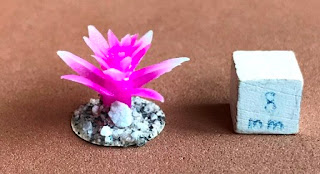



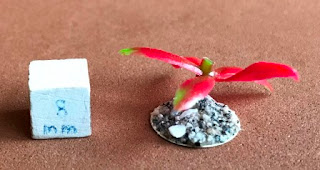































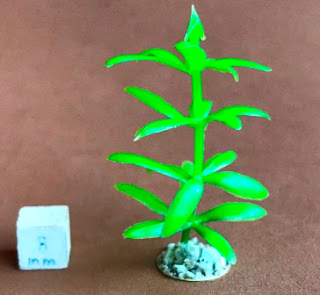
























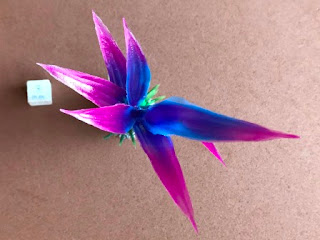





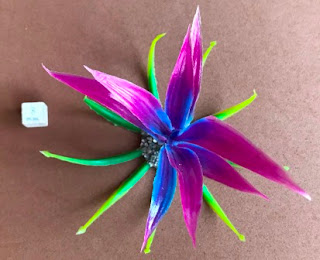






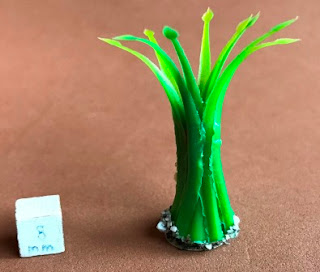










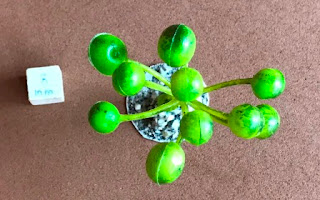
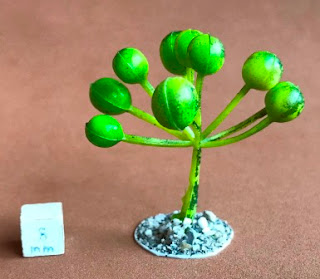














No comments:
Post a Comment